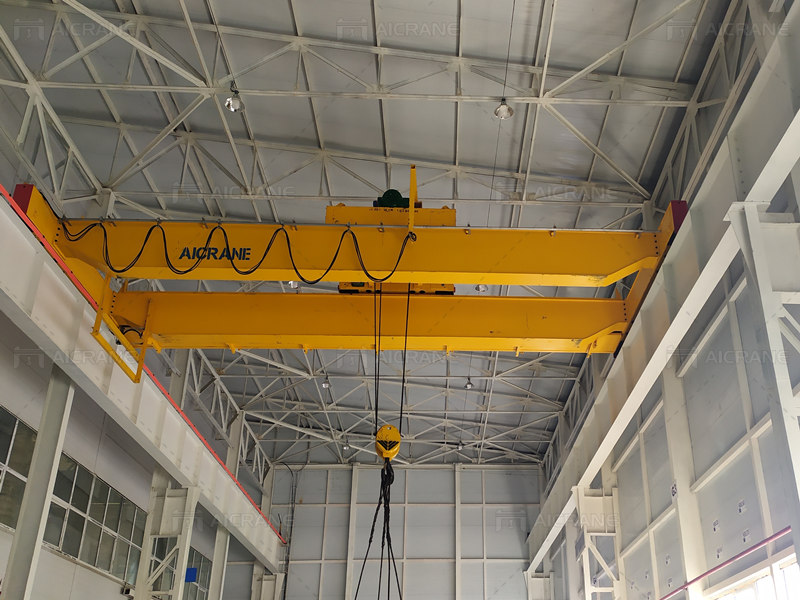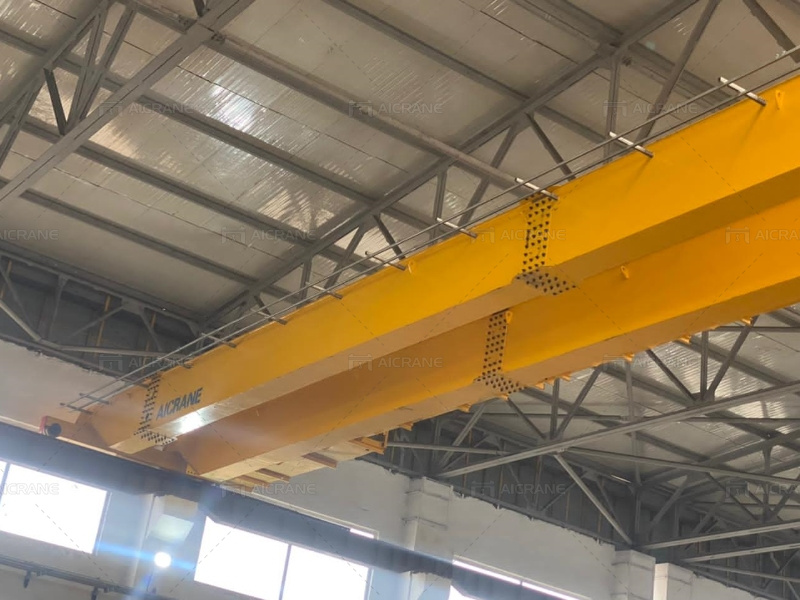In industrial environments where heavy materials and machinery are commonplace, ensuring workplace safety is paramount. Among the various equipment utilized in such settings, double girder overhead cranes stand out as critical components not only for enhancing efficiency but also for safeguarding the well-being of workers. This article explores the pivotal role of double girder overhead cranes in workplace safety, highlighting their features, benefits, and best practices for ensuring a secure working environment.
Enhanced Load Handling Safety
Double girder overhead cranes are designed with safety features specifically aimed at preventing accidents during load handling operations. These features include overload protection systems, which automatically detect when a load exceeds the crane’s rated capacity and prevent further lifting, thereby reducing the risk of structural failure or accidents. Additionally, limit switches are installed to prevent the crane from traveling beyond predetermined points, ensuring safe operation within designated areas. By incorporating such safety mechanisms, double girder overhead cranes minimize the likelihood of accidents caused by human error or equipment malfunction, thereby safeguarding workers and assets.
Precise Control for Accident Prevention
The precision control capabilities of double girder overhead cranes play a crucial role in accident prevention. Operators can manipulate the crane’s movements(Кран мостовой 50 т) with utmost accuracy, allowing for smooth and controlled load handling operations. This precision control minimizes the risk of collisions with other equipment, structures, or personnel in the workspace, reducing the potential for accidents or injuries. Furthermore, the adoption of advanced control systems, such as variable frequency drives and radio remote controls, enhances operator efficiency and ensures safer crane operation by providing real-time feedback and monitoring of crane movements.

Comprehensive Training and Certification
To ensure the safe operation of double girder overhead cranes(Мостовой кран в цеху), comprehensive training and certification programs are essential. Operators must undergo rigorous training to familiarize themselves with the crane’s operation, safety procedures, and emergency protocols. This training covers various aspects, including load handling techniques, crane inspection, and response to potential hazards. Additionally, operators are required to obtain certification demonstrating their competence in operating the crane safely and effectively. By investing in proper training and certification, employers can instill a culture of safety awareness among crane operators and reduce the risk of accidents in the workplace.
Regular Maintenance and Inspection
Regular maintenance and inspection are critical aspects of ensuring the continued safety and performance of double girder overhead cranes. Routine maintenance procedures, such as lubrication, inspection of mechanical components, and testing of safety devices, help identify and address potential issues before they escalate into safety hazards. Moreover, periodic inspections conducted by qualified technicians ensure that the crane complies with safety standards and regulations. Any necessary repairs or adjustments can be promptly addressed to maintain the crane’s optimal condition and prevent accidents due to equipment failure.
Heightened Safety Standards
Double girder overhead cranes adhere to stringent safety standards to mitigate potential hazards in the workplace. These standards, established by regulatory bodies and industry organizations, encompass various aspects of crane design, operation, and maintenance to ensure the highest level of safety. By complying with these standards, double girder overhead cranes undergo rigorous testing and certification processes, guaranteeing their reliability and effectiveness in preventing accidents. Additionally, manufacturers continually innovate to incorporate the latest safety technologies and advancements into overhead crane design(Кран мостовой электрический), further enhancing their safety performance and reducing risks in industrial settings.
Emergency Preparedness and Response
In the event of an emergency, double girder overhead cranes are equipped with emergency stop buttons and other safety devices to facilitate prompt response and mitigate risks. These emergency features allow operators to immediately halt crane operations in the event of an unforeseen hazard or malfunction, preventing potential accidents or injuries. Moreover, comprehensive emergency response protocols are established to guide crane operators and personnel in handling emergency situations effectively. Regular drills and training exercises ensure that all stakeholders are prepared to respond swiftly and decisively to emergencies, minimizing the impact on safety and operational continuity.

Risk Assessment and Hazard Identification
Prior to deploying double girder overhead cranes in the workplace, comprehensive risk assessments and hazard identification processes are conducted to identify potential safety risks and implement appropriate control measures. These assessments consider various factors such as load characteristics, environmental conditions, and operational constraints to determine the level of risk associated with crane operations. Based on the findings of risk assessments, mitigation strategies such as signage, barricades, and safety procedures are implemented to minimize the likelihood of accidents and injuries. By proactively identifying and addressing safety risks, employers can create a safer working environment and prevent accidents before they occur. Visit website:https://www.aicrane.ru/
Double girder overhead cranes play a vital role in promoting workplace safety by enhancing load handling safety, providing precise control, and facilitating comprehensive training and maintenance programs. Their incorporation of safety features, coupled with operator training and certification, ensures safe and efficient crane operation, reducing the risk of accidents and injuries in industrial environments. By prioritizing safety measures and adhering to best practices, employers can create a secure working environment that protects the well-being of workers and promotes operational excellence in the workplace.